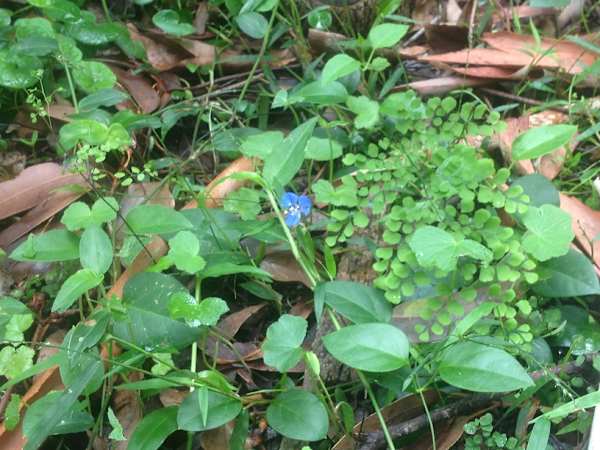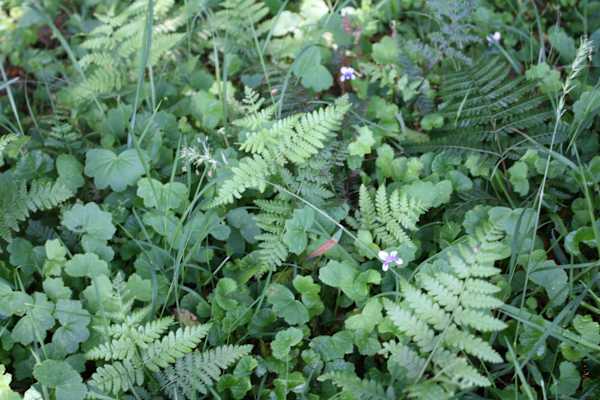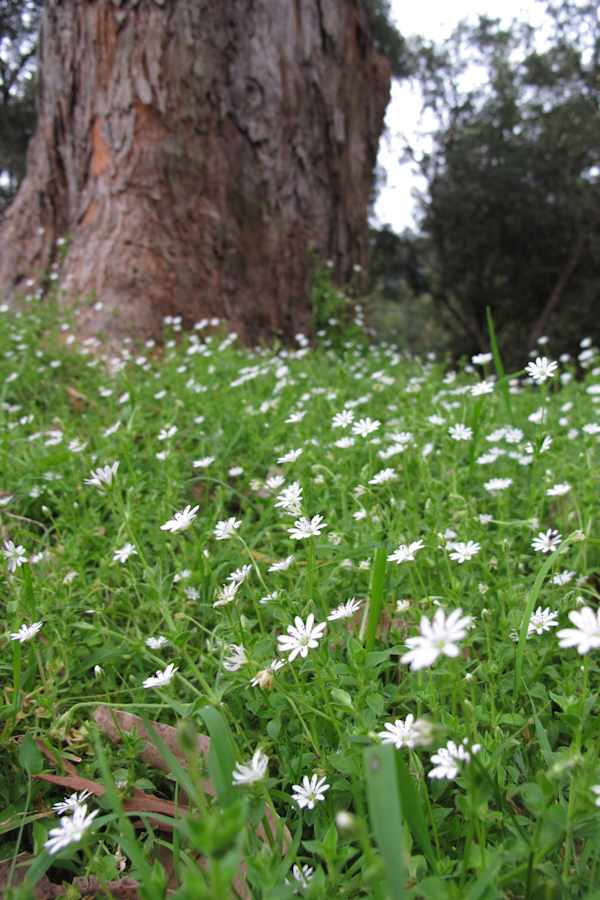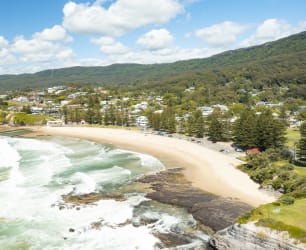I've written about many of Illawarra's local native ground covers, grasses and ferns. Individually each species has its appealing (or not-so-appealing) features, and environmental preferences, with everything from grasses that prefer to grow in mud flats on brackish or saline water to tiny tough ferns and succulents that enjoy life on exposed rocks.
Each can be seen growing, or can be deliberately grown, in the conditions that suit it best, with their extent and abundance expanding or contracting based on a range of weather, climatic and ecological factors.
But rarely is any single species present as a monoculture. Instead, many different grasses, herbs, forbs, vines and ground covers all grow together, creating a riot of biodiversity, food and shelter for a huge array of native birds, reptiles, mammals and invertebrates.

Species diversity increases overall ecological resilience. And, as in nature, so in gardening and landscaping. A native lawn or meadow that includes a wide mix of local species will generally cope better with the range of conditions experienced through each year and across the seven- to 10-year El Niño Southern Oscillation cycle, not to mention the longer-term multi-decadal cycles of wetter and drier conditions in Eastern Australia.
Prior to European settlement, the region hosted extensive lowlands grassy woodland with a very diverse range of ground covers and other low plants. These plants are pretty well all good options for growing native meadows across the coastal plain, and will do particularly well if also supported by the canopy tree species characteristic of local grassy woodland, which include White-feather Honey Myrtle (Melaleuca decora) and Prickly-leaved Paperbark (M. styphelioides) and a few eucalypt species.
Unfortunately Illawarra Lowlands Grassy Woodland is now a critically endangered ecological community, and is only protected on public land in a few tiny areas such as Croom and Blackbutt Reserves in Shellharbour, and Wiseman Park in Gwynneville. If you want to enjoy local grassy woodland, head to one of these places.
And if you want to help protect and restore this precious ecological community, the good news is that most of the understorey species that are part of it are not individually threatened species, so you can obtain them to grow.
Alternatively you can do what we did and just wait to see what local native plants come and grow in your garden. As long as you keep on top of the weeds that germinate from time to time, you'll be able to enjoy the indigenous species that want to grow there.

If you don't have a place you care for already, you can always go out to enjoy native meadows in remnant or recovering natural areas, such as this beautiful patch of Forest Starwort recorded in woodland near the Shoalhaven River. There are dozens of Bushcare, Landcare, Dunecare and other 'care' groups that exist to look after local ecosystems, and that also encourage support and care for local people too. See what's out there...






